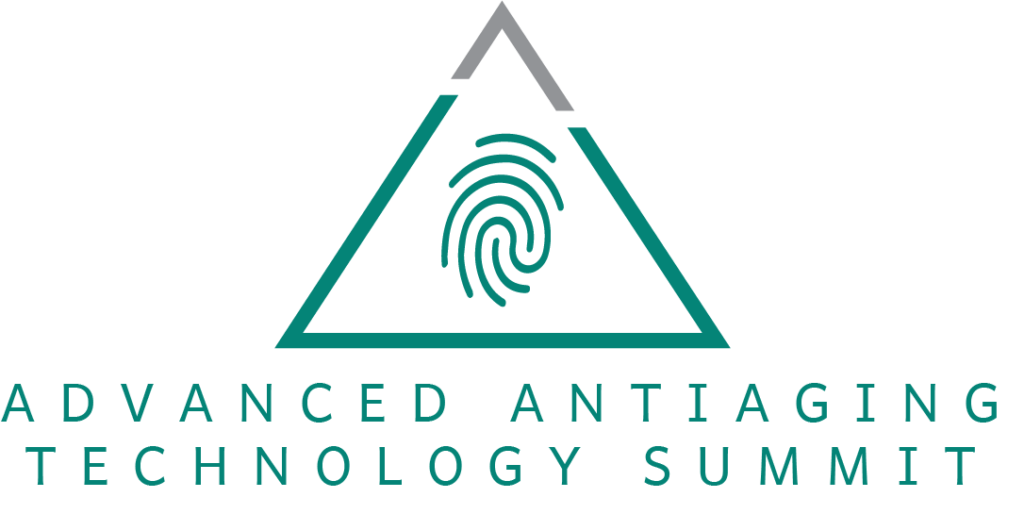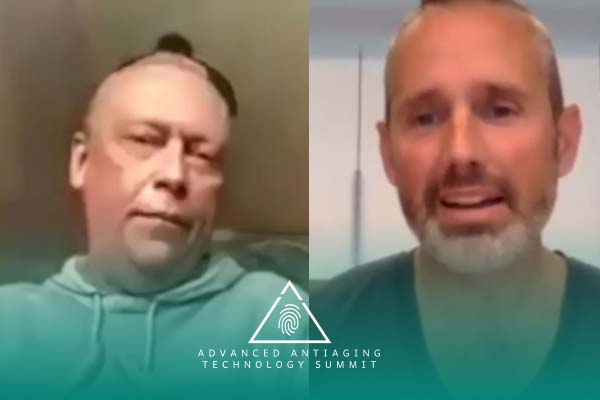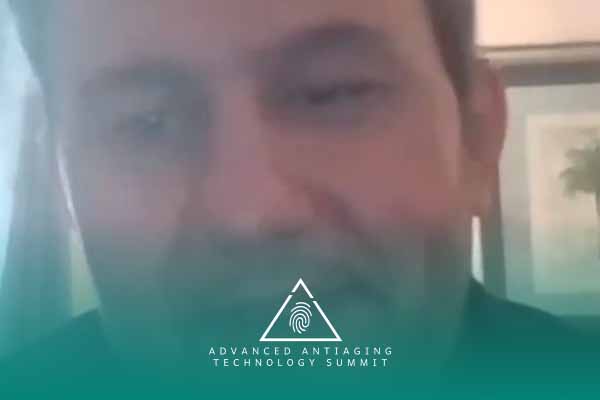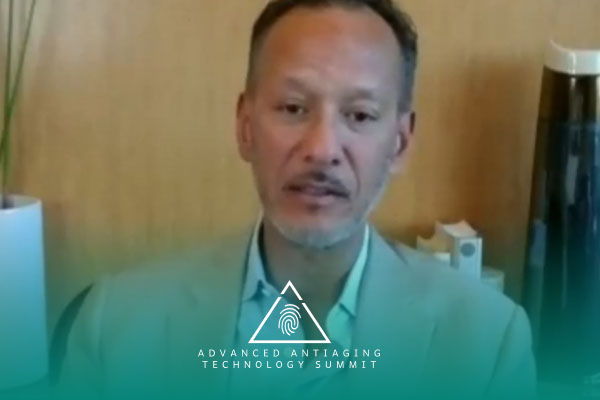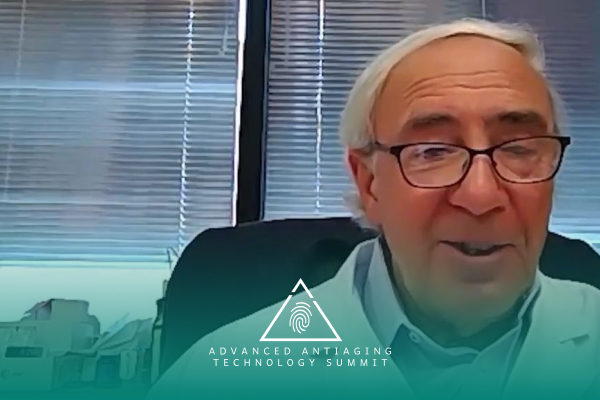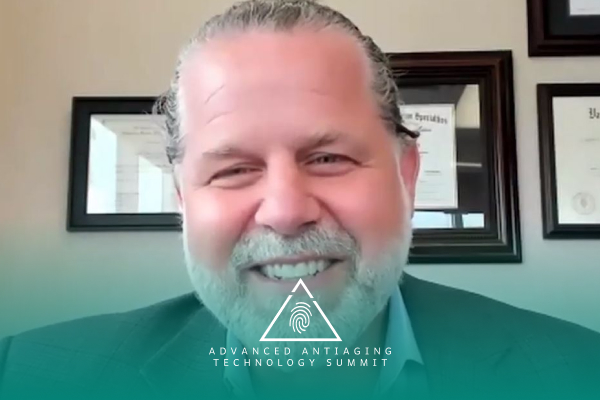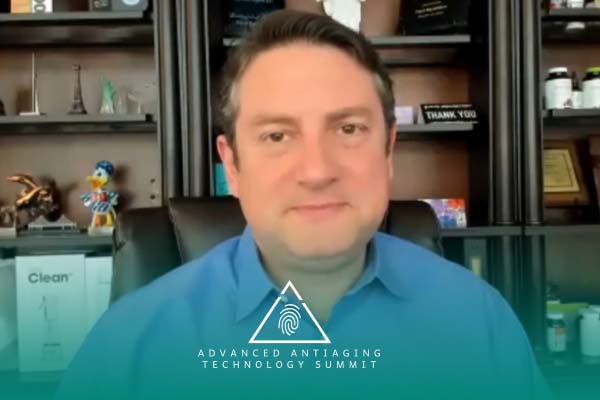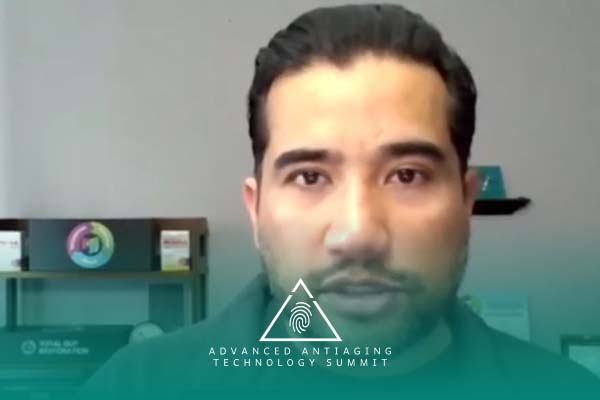Join the discussion below
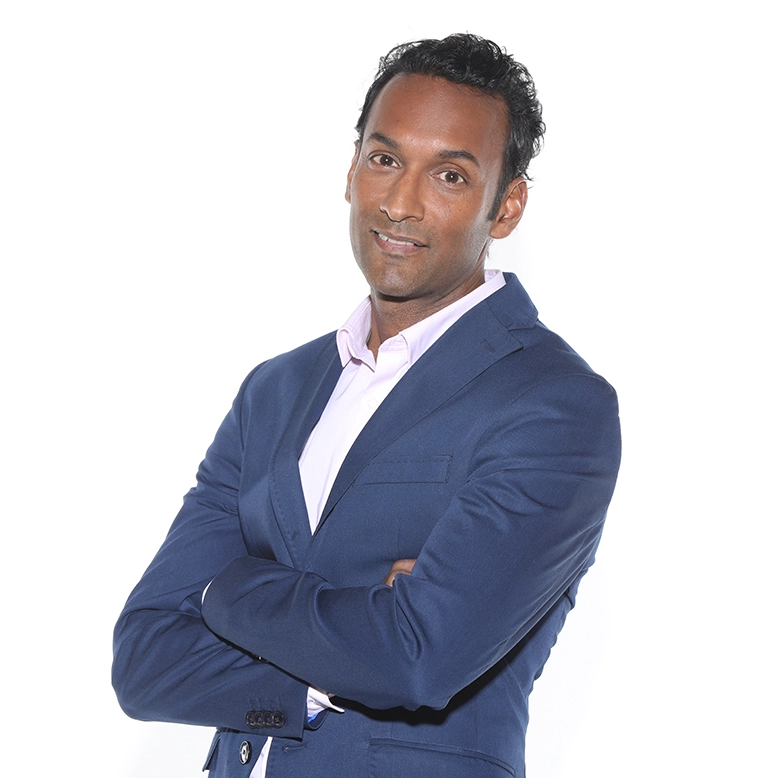
Dr. Goel is a medical physician and founder of Peak Human Labs. His mission is to speak knowledge of the latest cutting edge medical tools and science in order more people to live in a Peak mental, physical and spiritual state. You can learn more about his work at longevity.peakhuman.ca. Read More
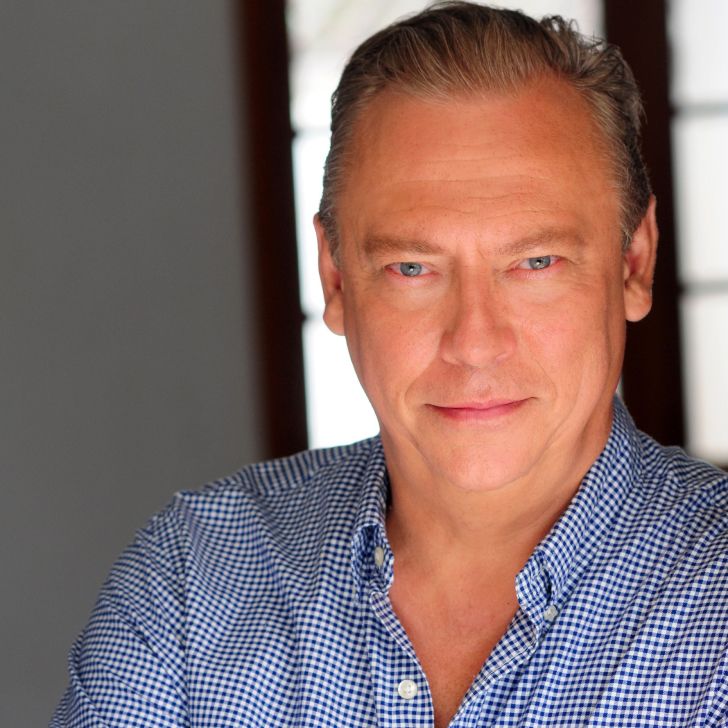
Sanjeev Goel, MD, FCFP (PC), CAFCI
Hi everyone, I’m Dr. Sanjeev Goel, and you’re listening to the Advanced Anti-Aging and Technology Summit. And today I have Mark St-Onge, and Dmitri Politico, Dr. Dmitri Politico, who are gonna talk about this amazing new device in bio electricity that they’re working on, in a company called A. Marc and Dimitri, welcome.
Marc St-Onge
Thank you so much for having us.
Sanjeev Goel, MD, FCFP (PC), CAFCI
So maybe let’s just get right into it. I know we have a lot to talk about today, so I’d love to hear about how you both came together, I know you have quite different backgrounds, to work on this remarkable technology.
Marc St-Onge
Yeah, now it’s actually a really interesting story. My field has always been kind of biotechnology and Dimitri has always been medical technology, and this project really represents his whole life’s work and I wish we had enough time to go through everything back from starting in the late nineties, through his medical research and his PhD, but our worlds crossed paths, I think it was in 2004. And, I was just at that point just more of a curious… Seeker of new gadgets and technologies. And, but this was still very early stages, Dimitri had just immigrated to Canada, was working, his company was incubated at the Mars Center in Toronto. And, so I really more or less got a glimpse of who he was and the general field he was working in. But then fast forward, 10 years I get this random call from Dimitri and he’s so excited.
It was like, “I finally finished my MVP.” It’s like, “Well, okay, well, what is it? What does that really mean? And so I’m based in Halifax, Dimitri was based in Toronto. And… So we, we agreed to say, look, you know I really want to learn more. So he flew to Halifax and proceeded to give me a demonstration of the, the technology. Now this is, of course this was something totally new to me. I mean, it’s totally new to the world. And my first kind of real… Preview into this whole world of bio electricity. And, we did this in kind of a, such a unique way. It’s like, instead of him explaining everything that the technology does he says, look, I’m just going to do a demonstration. And here’s the thing is I was, I recently recovered from, from meningitis. So thankfully, you know, generally a successful recovery but I was suffering from really bad headaches.
You know, probably like it was a huge impact on my quality of life, we’ll say He hooks me up to the, you know all the various electrodes runs the program and says, okay, well, based on the data, this is what I see. You were having terrible issues with your headaches and you know, getting into some really early interesting details without ever kind of me, what’s going on in my life. So that’s, that’s such an interesting way to kind of hook someone into a new idea. So that really was the impetus for how we look to kind of join forces this brilliant technology that was looking for a way to kind of enter the world, you know, and clearly I knew that this had a lot of potential but it took still the next couple of years us working together to really craft out what is the real vision, you know how does this, you know take its, its path… Into the, you know, both clinical and and we’ll see consumer side of, of wellness and, you know high-performance and clinical care, et cetera all the things that you deal with on a regular basis.
Sanjeev Goel, MD, FCFP (PC), CAFCI
So Demetrius you you’ve been a physician now for I think 20 plus years, is that correct?
Dimitri Polityko, M.D.
Yes. I finished my medical school medical university in 1919 Siberia, and it was a amazing connection with mark when I moved here. But before that it was some miracles happen in my life when I just was in like in a school for beginning of a biologist study, like justice school just for like I was, I was amazed. working together. How you can look like a MOBA floating in the water how they clear in clear water. And I was, was really ideal for biology. And also I was really looking for any communication between Biogen yet.
And when I finished school and I put proposal to work was 17 years old in a laboratory assistant in the histology. That one was amazing because I would say I was chosen for that proposal because I was one year. My job was making preparation of their budget make inject like some kind of like a solution and then cut and then make it feasible for scientists. And one year of work in that laboratory gives me huge, huge. I was able to recognize in itself a budget. And in that my time in my head, it’s like a connection in those microorganisms my soul in the nature of how they communicate.
I thought, okay, it’s a huge cage of a microorganism. They have to be connected together. And I asked some scientist about like sales, about structure around. I was more curious about around structure how they communicate and doctor practice has show me some small kind of holes. It’s not new or not. They told probably you you’ll discover it. It’s gonna work, but it’s some type of channels. The external channels. They make it communication not action and organs can communicate. And cells can communicate because it was amazing teacher. For me, it was seeped in my head. And then when I finished on your work and you said, okay I have to go to see how communication working. And I was working.
I was applied in the military five days to work in the communication department to see how communication work. And after that, he said, I have to go medical school and integrate this technology. And if you shared, it was in my head, I remember and I was studying, I was kind of stubborn to make it kind of additional work, to see how somebody will react and both spent time in the hospitals and talk to people how they feel, how they eat, what they do and how they communicate, how they feel about themselves. Because that one is much more true than because doctors the cover like language is quite different because it’s navigate them to make it right decision. But patients are nature kind of like expression. So I was a student, I was like a nighttime working volunteer. I was able to free and not pay, like get free information. Don’t pay anybody. They tell me. So, all pictures.
Sanjeev Goel, MD, FCFP (PC), CAFCI
I want to get more to the right into the actual technology. So, so basically, what I’m thinking of a lay person is that
Dimitri Polityko, M.D.
When I finished medical university, I decided to work in electrophysiology field, because that one is my way because I started to think, okay, people I can figure out how he communicates and how people communicate to each other. And then we can make it better illnesses that since 1990 I was making different researchers in near physiology fuel. I was studying acupuncture, electra puncher and I was studying botanical ingredients because my kind of Aycoutay for people before we stick out like the fuel it’s needed to be helped them.
So it’s made it like whole structure because without that, without biological communication I wouldn’t make it just type of links in electrophysiology because it’s 1990, nobody was talking about that much. So, but I was thinking like if I found way to found how organs, communicate how cells communicate. It’s like, it’s, I will make people communicate together and make them healthier. It’s it just, it was in my head. And I finished medical, additional medical school after medical university and open my… Medical… Wellness center in Russia, where I trained another doctors and we start to do research.
We started to take person by person and make it that any type of electrophysiology measurement, to find how organs communicate based on our experience and put experience from communication to people and make it confirmation through the big diagnostic tools. Because since 1990, as I finish at medical university I also work in Berlin in the biggest diagnostic center. In my region. I had a different type of tools like a available 24/7 x-ray MRI, whatever, because my curiosity was supported by government. They let me to use any type of devices anything to just let go of work.
Sanjeev Goel, MD, FCFP (PC), CAFCI
I’m going to ask a question, just cause I want to get right down to it and, and help the viewers understand because it is a bit, it’s a completely new mindset we have to think about. So what you’re saying is that you found a way, that for cells to communicate using their bio electricity using electricity in effect right, electrical impulses, is that?
Dimitri Polityko, M.D.
Yes yes yes, of course.
Sanjeev Goel, MD, FCFP (PC), CAFCI
That you’re saying? And you develop a device which has over many years that you’ve been working on in Russia and then you’ll come back, come to, you, came to Canada, I guess. And then you met with mark and now you’ve developed you’ve developed a device that’s I think is kind of in trials, is that correct?
Dimitri Polityko, M.D.
Yes, of course, I call it database and I was focused on communication. So those story wasn’t told it just inspire and it was focused on we start to make it confirmation me and a group of doctors teach and we start to make it confirmation. Did you like, let’s see if you found somebody actually in the order, so what is it? And if we make it another measurement to another organs reaction, so how they communicate because we took like… In my, kind of like, just a second I was trying to explain for like myself and for everybody who future was involved in this type of research, I mean Mark and our team. So a buddy of working as a like the nervous system, when you look at the globes of the nervous system, then you look at conservation energy consider gives me, it’s like if you have like one area is here that another area can be a , how are bargains? They can kind of information and… energy to support organs to organs because that one is help me to explain about like how you able to, yeah.
Sanjeev Goel, MD, FCFP (PC), CAFCI
Maybe what we should do is just, go ahead. I think, go ahead, Mark, if you wanna jump in.
Marc St-Onge
Yeah. I think, you know, it’s with so much background and kind of the deeper technologies I think we need to kind of fast forward to kind of where are we today? What do we have and, and how are we looking to kind of reshape this kind of field of, of, of clinical care. And of course, you know, an interesting aspect of what we’re doing is introducing something into the field of consumer wellness. And so, so the technology today, as Dimitri was explaining you know, is based on this novel set of, of, of electric biomarkers, right? And so we think of the body’s primary buyer informatics being electro-chemical impulses. So we have, we also have, look we have genetics as an epigenetics and proteomics as informatics systems about our body.
But, think of it? And as Demetrius is saying, you know how do cells communicate with each other? How do organs communicate with each other, including the central nervous system it’s electro-chemical impulses. And these are not just flowing only through nerves but through ion channels. And so over many, many years, we were able to develop a device that we can use kind of call it a scanning device that, you know, I think when you when you experienced the technology, you think, oh, it’s it’s set up a lot, like an ECG. If someone was getting electrocardiogram or in cephalic gram except we’re not measuring specifically the heart or, or the brain, this is the first time as far as we know, using an electrophysiological approach we can measure every organ, every gland in the body and how specifically they communicate to each other.
So the, nice thing about this is that those kinds of capabilities only really exist in imaging devices, right? That are taking, you know, images and clean functional images of the body. But what we’re actually is, is being able to measure the information that is traveling through the body. So think of it as a computer language, you know the body has its own set of language and our job was really to, how do we decode? How do we measure it and how do we decode that? And then, you know, of course creating these mass amounts of data is the interpretation side.
So the question was, is there any relevance to the data? Yes. We were able to show it’s very reproducible and it has clinical implications. And so the technology that we’re able to introduce into the marketplace, or eventually we’ll be introducing from a clinical perspective the ability to do a real time analytics of the entire physiological system, right. With all these, you know very insightful indicators that help us understand you know, not just the myopic view sometimes of how medicine will kind of proceed and say, well if I’m a cardiologist I may just be focused on just the cardiovascular function. Right?
And so the, the thing is when sometimes symptoms show up in a particular region of the body we have this instinct to say, oh I’m going to treat that, you know if you had the ability to map the entire physiology and if you think in terms of a functional medicine approach, right. Now you can start to look intelligently, like with, with the help of computers and artificial intelligence say, okay, well here’s where it’s expressing more as symptoms versus getting into the, into root cause. And I think that’s, you know in terms of what you’re trying to do, unlock the, you know the healing as well as the performance potential in your clients is that we really need that level of detail.
We need to be able to discriminate, you know symptoms versus a root cause. And so this would be a very easy way to map the entire physiology, to look at, the function of the organs, as well as, be able to detect the presence of degenerative states to be able to also to predict the presence of more kind of classical disease states of the body. And, we have, we’re really kind of now focusing a lot in terms of the diagnostic side, you know and that’s kind of the big future path for us. And of course, once again, when you, when you deal with such huge datasets, you know, we have to leverage the capabilities of artificial intelligence.
But the cool thing is, like I said we can also measure functional states. And so when you bring this into the context of consumer wellness, right we now have this ability to empower, you know data collection outside of the clinic, right? And so this is part of that decentralization of care which is going to shift things, because I know that if you had, if you had information as a clinician, about your patients that wasn’t like every time they could go and get the kind of a blood workup, or, you know maybe you have them do an MRI or an ultrasound but if they are collecting data from their home from their daily life, every couple of days, even if you if you didn’t see them for a full year, they come in you could have hundreds of data points and you could say, yeah, well, you know maybe you could do that with an apple watch. You know, apple watch is, is, you know constantly measuring heart rate, heart rate variability but here’s the thing, whole body analytics is very different than looking at, you know in the spectrum of, HRV, right. It’s kind of looking at someone’s health from 50,000 feet versus kind of, you know, 50 feet.
Sanjeev Goel, MD, FCFP (PC), CAFCI
I’m just, so let’s just for just again the viewer to understand. So there’s enough variation and there’s enough information coming from these from, I guess, the electrical signals from these leads that people are putting on with the device that you can actually sense the health of various organs. Is that correct?
Marc St-Onge
Yes.
Dimitri Polityko, M.D.
Yes. Sorry, I misunderstood for begin because I was thinking you need more story but if you’re talking about how it’s body work is definitely our information system trying to keep special balance of our body based on environment and . So that one is like the best tool today. I would say to help us to really not only organs communication, our reaction for environment this can be food psychological environment, environment, environment that three environment, major environment affects our body. And we have to know how we react. They have to know how we are that.
So in this case, no, any imaging device can ask her, no x-ray no MRI because they are they just working stable picture. No, any… A functional device can tell your whole picture because we can use, it’s a great device, but they in specific areas of body, they could there is one unique tool to, they can analyze in 30, 50 30 seconds, whole body communication, organs communication, when I’m taking communication and the reaction adaptation factor which is very important and especially important for people who is looking good health who is watching good health. If it, if we can take it like position for people who is at least what that one is very important, because based on organs communication, you can predict burnout process. You can project even like the predisposition of injury you can predict even like mental guest satisfaction of event they are doing because device able to read organs reaction and based on organs, the action that we can make it. And we can modelize which is the device doing all the rage, but it’s not maybe it’s too much, I’m talking second metrics.
Marc St-Onge
Yeah. So I guess, you know, to, to Dimitri’s point and back to your question, Sanjeev is we, traditionally we look in terms of biochemistry. We want to see changes in the biochemistry of, of an organ. Well, every time there is a change in the function of the organ or the cells, the tissue it’s changing the information through these you know, electrochemical impulses and it’s communicating to other tissues other organs to the central nervous system. And so our data we’ve been able to validate that we can essentially the approxi for electro-chemical… Sorry, the biochemical changes through electrochemical informatics.
And the good, you know really kind of case in point is, you know sometimes when we’re either doing research or even just demonstrating the technology we do kind of like a provocation or a stress test. And Dimitri was talking about our body’s always constantly reacting to its environment. And let’s take, for instance, the food environment. So many people today that have maybe food sensitivities the body just doesn’t have the capability of being resilient enough to withstand the impacts that have sometimes the allergenic potential of certain foods.
Well, you know, think of this as, the ultimate bio hacker tool if I want to experiment and I want to take a food if I can actually do a baseline, if you take a scan and if if I actually measure even 30 seconds later after I consume something, my body is, you know it knows exactly what I ate and it’s responding. Sometimes it’s going to respond in a very positive fashion sometimes in a negative fashion. So if you’re, let’s say you’re, you’re dairy intolerant and we scan you a baseline you drink a glass of milk, we can measure it the impacts in a predictable way, starting, you know kind of like with the gastrointestinal tract you know, lymphatic changes, maybe some adrenal activation and we can do time series, and it paints. This really, really incredible picture of how the body the whole body is responding to changes in its food environment.
We’ve done this also with its chemical investment. Like for instance, like if we were if someone has smoking a cigarette for most people smoking is going to be a very toxic event for body. And so to do a before kind of the before and after time series scenario, we can very very do detailed map of how the body is coordinating all of its biological resources to deal with that stressor. And you know, we’ve done work with high performance athletes over the last, you know, four years we’ve worked with in California with the Red Bull High-performance Institute really kind of now looking more into the world that you kind of… Have moved into is like performance people, regardless of whether or not you’re a professional athlete. People want a high performance.
So it’s different when you know what you’re measuring kind of or practicing sick care versus people that sure they may have some some chronic issues, whatever but you’re trying to support an environment for them to really unlock that full potential to help them live their best life and perform at a high level, in a sustained way. Anything they do well, you know, athletes are really really good examples or subjects to study. And we studied these for about four years to understand how our technology could even work in that in that field. And it was really kind of, we chose red bull because red bull is renowned as kind of being leaders in science and technology for, for human human potential and athletic performance.
And so there were so many great insights but we do stress tests. We want to know how even an athlete how’s their body respond to changes in, like, to jet lag. So how does that impact their circadian rhythm? So we’ve been able to do some really really insightful things like that, you know, or, you know what changes physiologically are happening, you know before they compete kind of during or just after they compete what does their recuperation kind of phase look like? And by having this whole body analytics we can make really, really informed decisions. How can we better support them? So it takes a lot of the hidden insights out of the work that you want to do from a clinical, you know or just kind of a, a wellness optimization perspective.
Sanjeev Goel, MD, FCFP (PC), CAFCI
What do you think the future will look like with regards to like, how can the viewers get access to this technology? Like where is it at right now? And…
Marc St-Onge
Yeah, so we…
Sanjeev Goel, MD, FCFP (PC), CAFCI
Consumer product is coming. Just tell it, talk about that.
Marc St-Onge
Yeah, so we, we’re building out two parallel tracks both consumer and clinical. The consumer offering will kind of be our first entry into the marketplace. And so, you know, this, this plethora of of digital health devices today that are out there the Fitbits and the apple watches, et cetera some really great devices that have some utility. However, this would be the first consumer based device that gives someone the potential to do a scan, very easily, take, you know just a couple of minutes out of your day, do a scan.
And our, our artificial intelligence engine then can interpret all that data and give you really insightful indicators about how are you doing from a wellness perspective with the idea that we want to help them to optimize that, right? Including things like just the concept of healthy aging longevity, you know, and and a big theme with your, your summit right now, it’s like what can we be doing in our lives to help us to be on a track of kind of more optimized, you know aging process and, you know, it’s so unique to everybody. So that’s, there’s so many different, you know actual insights that we can provide consumers just through you know, them having the Aycoutay app. And there’s a hardware component as well to record the data.
You know, it comes from biosensors but from also from a clinical perspective which would be the next kind of, you know, market entry for us, you know, using the exact same concepts, you know we can take into a clinical practice, the opportunity to to do… Frequent, data captures, about how how is someone tracking if you have them on a protocol? Well, how are they really doing? Yes, sure. You’re going to still rely on things like blood tests and other types of, you know, diagnostics you know, however, this is, you know, a very very important tool that a clinician can use once again, to to look at the whole picture to uncover those hidden insights that you, you know you will need to kind of once again optimize and create a hyper-personalized protocol for for your patients, ultimately delivering really the best possible care possible.
Dimitri Polityko, M.D.
Can I, a few of your second, I would like to add. When I if am doctor in Russia, I collect these 6,000 about patients who have disorder, when they move here? Me and mark, we collect data waves of people who have a healthy life. Then we compare it to where do you need, I hope its possible, You find connections, what is count as an illness? Let’s say for example, partisans disorder we found like some type of it’s the same activation in the same area but they have no partisans, they have a better health then other people. So it means like waste on those types of confusions and computer like database from sick people and compare database from healthy people who is doing healthy life. You can see what is sickness. It’s actually, it’s a gift. So what my dream for future, to help people from sick, away, from not like a for their body So we can instead of sick people, we can get, give the people the same amount. So that is my dream.
Sanjeev Goel, MD, FCFP (PC), CAFCI
Yeah. Well, I’m, I really think that we’re, I think you guys are at the beginning of something, that’s really amazing. I think a couple of years from now people are going to be asking, you know wanting to listen to this exact interview at how it all began. So I understand that you’re raising you’re raising funds and raising A you’re doing a series a for this, for this company Aycoutay.
Marc St-Onge
Yeah. We’re in the later stages of of completing our minimum viable product. And this is for the consumer go to market strategy. So yeah, we just, you know, we’ve we’ve been very fortunate to have a lot of government research grants and some early kind of pre-seed investors. We’re now kind of the final push into the marketplace. And we just opened up our series a round
Sanjeev Goel, MD, FCFP (PC), CAFCI
Where should people go to learn more about Aycoutay and and to learn more about this technology?
Marc St-Onge
Yeah. So we don’t really have a lot of information available online today… But, you know maybe in the, you know, the the summit notes that people could, you know, reach out and get a direct, feel free to contact, contact us directly I can provide that information. And as well, you know, you can you can visit our, our website at, Aycoutayuity.com. A Y C O U T A Y. And there’s an, there’s an opportunity there too. At least leave some information so that you can stay up to date, you know communicate us, with us and we’d be happy to provide anyone some additional information.
Sanjeev Goel, MD, FCFP (PC), CAFCI
That’s so awesome. I know I’m going to get one of these devices in my practice. As soon as it’s it’s, it’s ready, we can do that. So I’m pretty excited. This is a whole it’s really, I think, mind blowing cause it’s, it’s a whole new area that we don’t learn learn in medical school, but I can just see that this is going to have some huge share, a huge impact on our health, on our health that we provide to patients.
Dimitri Polityko, M.D.
I can tell you, sorry for the microphone. I can tell you, for example, for future, when, when I see it at this one, it’s a stream to artificial intellect the development, instead of like, yeah. As I told amount of like people who is it ego who is a more balanced, we can get more gifted people. And also it will benefit it’s society, because each each bug, how the body design, what its environment. Everybody will choose a right work and the right communication, the right environment to lead. That one is like, so my dream to paradise and I believe guys, who you’re… Around you, mark. My team is everybody support these by benefits, because you see feedback. And when you start to work, it’s definitely you would see like… Astroscope, telescopes for… Stars. We just, we can just cover much more than we expect from our budget. And guys, it’s amazing what insights it’s amazing.
Marc St-Onge
So lots and lots and lots of potential, but we’re really really grateful for the opportunity to to sit and talk to you and share a little bit of our story with your audience and congratulations on another year, the summit it’s it’s quite an exciting lineup that you have.
Sanjeev Goel, MD, FCFP (PC), CAFCI
Thank you so much. I really appreciate your time today. Thank you. Thank you, Dimitri.
Downloads
